The Best Nissan 350Z Exhausts

For decades, Nissan has had a strong reputation in the tuner community, from the mythical Skylines of Japan (before the GT-R arrived) to the overwhelming popularity of the S13 and S14 240SXs among drifters. When the fifth-generation Z hit the market as the 350Z in late 2002, it quickly became one of the most popular tuner cars of its generation. Drag racers, drifters, and show car enthusiasts filled every sport compact event with rows and rows of modified 350Zs, which means nearly every aftermarket company was churning out products for the sports car.
We’re now nearly two decades removed from the 350Z’s original release, which means the sports car has become affordable on the used car market. But one thing hasn’t changed and that’s the aftermarket support. Today, you’ll find dozens of companies offering parts for the 350Z and that means plenty of different exhaust options. If you’re having a tough time narrowing down your choices to one, you’ve come to the right place.
Below, you’ll find our top picks of the best 350Z exhausts in hopes of helping you find the right one for you and your ride. For more information on the best Nissan 350Z exhausts, refer to our table of contents.
Table of contents
- 1. Editor's Pick: TOMEI Expreme Ti Y-Pipe Back Exhaust
- 2. Best on a Budget: ISR Performance Single GT Exhaust
- 3. ISR Performance Series II Full Titanium Single GT Exhaust
- 4. HKS Hi-Power Exhaust
- 5. Motordyne Shockwave TDX2 Exhaust
- 6. MagnaFlow Cat-Back Exhaust System
- 7. Borla S-Type True Dual Cat-Back Exhaust
- 8. Stillen Cat-Back Exhaust
- Is an aftermarket exhaust legal?
- Will an exhaust void my warranty?
- Is a larger diameter exhaust always better?
1. Editor's Pick: TOMEI Expreme Ti Y-Pipe Back Exhaust
If you've ever researched anything about the automotive aftermarket, there's a good chance you've heard of the brand TOMEI. Based in Japan, the company started off specializing in building Nissan race engines, so it knows a thing or two about Nissan cars. When it comes to the 350Z's VQ35DE engine, TOMEI has a wide assortment of products, including engine internals such as camshafts and connecting rods. Knowing that, it's little surprise we recommend its exhaust as our Editor's Pick.
This isn't a cat-back exhaust, rather it connects at the y-pipe and if that's what you're looking for, the TOMEI's Expreme Ti should check all your boxes. It is a rather loud option, but it does come with a silencer to help quiet things down a bit if necessary. Other than the flange that connects to the factory mid-section, the lightweight three-piece assembly doesn't have any flanges. Instead, you'll connect all the pieces together using clamps, which also makes install a little more flexible. Overall, its design has minimal bends and curves for maximum performance with 3.15-inch (80 mm) diameter piping constructed from stainless steel.
Along with the larger diameter piping and straighter design compared to stock, the titanium construction means this exhaust weighs about 13 pounds, compared to the factory's 46 pounds.
Pros | Quality brand, lightweight titanium material, designed with a focus on performance, burnt tip |
Cons | Loud, single exit exhaust so the hole on the other side of the bumper is empty |
2. Best on a Budget: ISR Performance Single GT Exhaust
We understand not everyone wants to spend $1,000 on an exhaust for their Nissan 350Z. The aftermarket has plenty of affordable options, but quality is always a concern, which is why the ISR Performance Single GT Exhaust is our Best on a Budget pick. The brand has built a reputation within the Nissan community for blending quality with affordability, with years of hands-on experience building vehicles and testing their products thoroughly on the track before they hit the market.
This three-inch exhaust option produces a deep and aggressive tone, fully constructed from mandrel bent stainless steel with a polished tip and muffler. It's precision TIG welded and is a few pounds lighter than the factory exhaust. At the end of the system is a 4.5-inch tip with a fairly standard design.
This is a single exit, y-pipe back exhaust is ideal for 350Z owners looking to enhance their performance and tone without breaking the bank account.
Pros | Great bang-for-the-buck exhaust, polished stainless steel construction, deep and aggressive tone |
Cons | Three-inch tubing may not be ideal for everyone, single exit exhaust so the hole on the other side of the bumper is empty |
3. ISR Performance Series II Full Titanium Single GT Exhaust
Oftentimes, titanium exhaust systems demand a price premium, and it's easily understood why since it's a lightweight, high-strength material. Striking a balance between price and performance is another entry from ISR, the company's Performance Series II Titanium Single GT Exhaust, made entirely from titanium to tip the scales at a scant nine pounds. Like the Single GT we chose as our Best on a Budget Pick, it's a y-pipe back exhaust, so you're experiencing a noticeable weight savings from the factory's 46-pound unit. It's a two-piece, three-inch exhaust system with flanges to mate the mid-pipe to the muffler section, all precision welded for quality.
This exhaust delivers a deep and aggressive tone, but keep in mind it can be quite loud since there's no resonator in the mid section. You'll get a clean, although basic, muffler design but the burnt tip lets the world know you're rocking a titanium exhaust.
Pros | Extremely lightweight, competitively priced titanium option, straight design, burnt tip |
Cons | No resonator means it's loud, single exit exhaust so the hole on the other side of the bumper is empty |
4. HKS Hi-Power Exhaust
An aftermarket brand that has been around for decades, HKS is practically a household name for tuners and car builders worldwide. The HKS Hi-Power Exhaust is what we'd call a Japanese classic, as the Hi-Power name has been used for exhausts across various makes and models for years, from street cars to race cars and drift cars. It's arguably one of the best-sounding exhausts throughout its history, as HKS has developed a straight-through muffler design that is deep, throaty, yet not overwhelmingly loud for a daily driver. From the factory, the VQ35DE is one of the best-sounding engines out there, and the HKS Hi-Power simply enhances that deep growl to sound even more menacing.
This is a cat-back exhaust system, meaning you'll bolt it onto your catalytic converters, replacing the entire exhaust system from then on. As you can tell from its photo, it's a true dual exhaust with approximately 2.4-inch piping (60 mm) that features a special SUH 409 coating to protect the stainless steel underneath from the elements. Although the rest of the exhaust itself is stainless steel, the Hi-Power does have burnt titanium tips.
Pros | Classic name, great sound, not extremely loud, full cat-back solution, burnt titanium tips, true dual exhaust |
Cons | Smaller diameter piping than some of the competition, stainless steel rather than full titanium |
5. Motordyne Shockwave TDX2 Exhaust
For those who want a premium exhaust and willing to spare no expense, consider Motordyne's Shockwave TDX2 Exhaust. It's a true dual exhaust system that includes an x-pipe with progressively expanding 2.5-inch primary tubing to three-inch exhaust tubing for an optimal power curve. Its design makes it one of the best sounding exhausts for daily drivers on our list, which is vouched by numerous owners on forum threads when a community member asks, "What's the best sounding exhaust for the 350Z?"
It's made from polished stainless steel 304L with back purged and TIG-welded construction. At the end of the exhaust are 4.5-inch rolled or slash cut tips in stainless steel or optional burnt titanium. If you're running a turbocharged VQ35DE and really love Motordyne's exhaust, you can custom order it with full three-inch tubing instead of the 2.5-inch primary tubing. So if you're looking for performance, quality, and sound without a concern for budget, check out this premium dual exhaust from Motordyne.
Pros | Quality construction, includes x-pipe, step-up tubing diameter, sounds great, option for full three-inch tubing |
Cons | Price, can have drone on the freeway depending on the rest of your exhaust setup (stock cats vs. HFCs vs. test pipes) |
6. MagnaFlow Cat-Back Exhaust System
One of the most well known brands when it comes to exhaust components, MagnaFlow pretty much has exhaust systems for every sport compact car out there and more. Our recommendation from MagnaFlow comes from the company's Street Series Stainless Performance Exhaust lineup, which focuses on having a mild tone inside your vehicle, while sounding nice and throaty on the outside. In other words, comfortable on the ears while driving, but noticeable on the street to everyone else. The main piping diameter of this system measures 2.5 inches and it's a cat-back system with all mandrel bent tubing.
Featuring 409 stainless steel, which is more resistant to corrosion than 304 stainless steel, MagnaFlow uses CNC precision robotic manufacturing to construct its exhaust. This is also an ideal exhaust system for 350Z owners who want a more subtle design for the exhaust tips, which do measure 4.5 inches in diameter. In a way, it's simply a larger version of the factory design so the exhaust tips aren't the center of attention, like what you see on some of our other recommendations. Oh yeah, MagnaFlow includes a limited lifetime construction warranty with this exhaust.
Pros | Relatively quiet, 409 stainless steel, CNC precision robotic manufacturing, subtle exhaust tip design, limited lifetime construction warranty |
Cons | Subtle exhaust tip design isn't for everyone, and for some owners, it might be too quiet |
7. Borla S-Type True Dual Cat-Back Exhaust
Borla is yet another household brand in the exhaust industry, with the company's systems made in the U.S. Its offering for the Nissan 350Z is a true dual exhaust that comes with an h-pipe for a complete cat-back system. Borla uses its signature XR-1 Race-Bred mufflers for increased performance and improved sound. You'll want to consider this exhaust if you want a system that simply amplifies the stock exhaust note and you're not in the market for something too loud. As you can tell by the photo, it uses a fairly straight-through design and the company claims flow numbers improved 27 percent over stock, with independent dyno tests showing 15 to 20 horsepower and torque gains. It's worth noting however, that it uses 2.25-inch diameter tubing.
It's constructed from T-304 austenitic stainless steel and when compared to the factory exhaust, it weighs 12 pounds less. At the end are four-inch, angle-cut rolled edge T-304 stainless steel tips, which again, are more subtle than other entries on the market. In fact, it fits the factory rear diffuser nicely if you're looking for a more factory-like appearance. All of Borla's products come with a million-mile warranty for peace of mind.
Pros | True dual exhaust, increase power across the whole band, T-304 austenitic stainless steel construction, subtle tip design, million-mile warranty, made in the U.S. |
Cons | 2.25-inch diameter tubing might be restrictive for certain applications, especially turbocharged engines |
8. Stillen Cat-Back Exhaust
When the Nissan 350Z initially arrived on the market, Stillen was one of the first brands to develop and produce parts for it. The company's history of working on Nissan vehicles made it obvious that Stillen would move quickly and that's one of the main reasons why this exhaust is on the list. It's tried and true for many years with its 304 stainless steel construction and limited lifetime warranty. The company claims you can expect an increase of 16 wheel horsepower and 14 ft-lbs of torque, while delivering a mild note at idle and cruising. It opens up to a more aggressive note at wide open throttle.
This is a dual split rear exit exhaust with 4.5-inch dual wall tips at the end and polished mufflers. It's one of the quietest exhausts out there for the 350Z, so if you're looking for a bump in performance with a full cat-back system without all the noise, consider this option.
Pros | Well-known brand, quiet exhaust, quality construction, limited lifetime warranty |
Cons | Power claims may be a bit optimistic and will largely depend on your other mods |
Is an aftermarket exhaust legal?
Photo credit: Jason Siu / AutoGuide.com
Ah, the age-old question of whether or not installing an exhaust will get you a ticket. Well, the answer to this largely depends on where you live and your local state laws. The more universal concern is the state of California, and some exhausts may be CARB exempt, meaning they are legal on the street. Generally you'll want to see what the manufacturer claims, although that may be difficult for some systems that come from Japanese brands. If you have any concerns, we recommend contacting the retail outlet or manufacturer for more information.
Will an exhaust void my warranty?
Here's another age-old question that's been around for decades. To give you a proper answer, we refer to MagnaFlow, which says that adding an exhaust does not void your factory warranty. The company also says it's illegal for a dealer to deny you the OE warranty because you've changed the exhaust system. So why are there concerns? Well, there is always the possibility that something gets damaged as a result of improper installation, or a dealership could be really picky and blame an aftermarket exhaust for failing catalytic converters, for example. Either way, MagnaFlow recommends to mention the "Magnuson Moss Warranty Act" if you run into any issues if a dealer or manufacturer tries to deny you a warranty repair as a result of an aftermarket exhaust.
Is a larger diameter exhaust always better?
You could research the topic of whether or not larger diameter exhaust tubing is better for days and still not find a clear-cut answer. So unfortunately, we can't deliver you one. That's because it's largely dependent on the other modifications on your car, or your intentions with your vehicle. For example, it's widely considered with forced induction (such as turbocharging or supercharging) that a larger diameter exhaust is better. That's because you're flowing a lot more air through your engine and it needs to be expelled just as quickly for maximum performance.
But if you're running a naturally aspirated engine, it's not performing the same as a turbocharged engine. In that situation, larger exhaust tubing could actually do more bad than good. Even worse, it could affect your fuel economy since you're robbing your engine of horsepower. Just remember, some back pressure is good—you don't want to get rid of all of it.
Also, take into account how loud of an exhaust you really want. Typically, the larger the tubing, the louder the exhaust. Of course there are other variables such as whether or not there are resonators and how the mufflers are designed, but it's generally the case. You'll likely notice that a three-inch exhaust is louder than a 2.25-inch exhaust, all other things being equal.
We are committed to finding, researching, and recommending the best products. We earn commissions from purchases you make using the retail links in our product reviews. Learn more about how this works.
Photo credit: Jason Siu / AutoGuide.com

Jason Siu began his career in automotive journalism in 2003 with Modified Magazine, a property previously held by VerticalScope. As the West Coast Editor, he played a pivotal role while also extending his expertise to Modified Luxury & Exotics and Modified Mustangs. Beyond his editorial work, Jason authored two notable Cartech books. His tenure at AutoGuide.com saw him immersed in the daily news cycle, yet his passion for hands-on evaluation led him to focus on testing and product reviews, offering well-rounded recommendations to AutoGuide readers. Currently, as the Content Director for VerticalScope, Jason spearheads the content strategy for an array of online publications, a role that has him at the helm of ensuring quality and consistency across the board.
More by Jason Siu



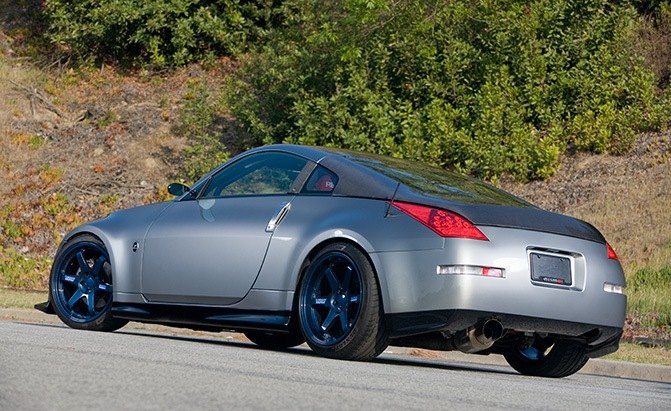





















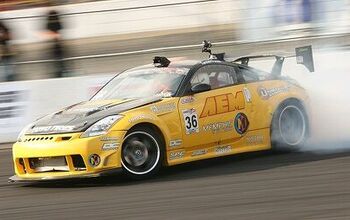
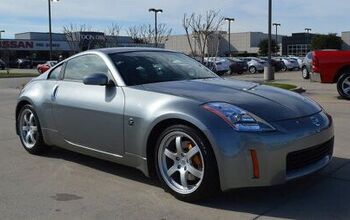
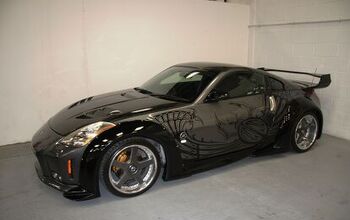
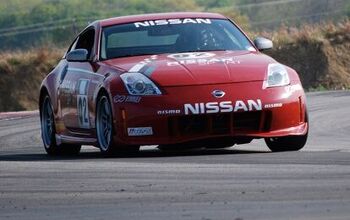
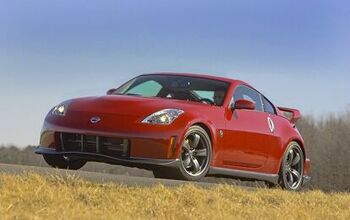










Comments
Join the conversation